Climate drama is far from over in Congress — and California

- Share via
This is the Aug. 11, 2022, edition of Boiling Point, a weekly newsletter about climate change and the environment in California and the American West. Sign up here to get it in your inbox.
It’s been 126 years since Swedish chemist Svante Arrhenius concluded that greenhouse gas emissions from burning fossil fuels could cause Earth’s temperature to rise; 53 years since Daniel Patrick Moynihan, when he was an advisor to President Nixon, warned that the “carbon dioxide problem” could inundate New York City and Washington, D.C.; and 34 years since climate scientist James Hansen testified to Congress “with 99% certainty” that global warming had already begun.
After all that time, the U.S. Senate — that deliberative, careful lawmaking body — has passed a climate bill.
The Inflation Reduction Act is a product of weird and idiosyncratic circumstances, including the filibuster and a parliamentary maneuver called “budget reconciliation.” With a 50-50 partisan split in the Senate and Republicans largely unwilling to act on the climate, the bill’s passage hinged on two Democratic caucus swing votes — one of whom, Joe Manchin III of West Virginia, made his fortune off coal.
My colleague Jennifer Haberkorn has a story on the Senate vote, and on the sweeping bill’s non-climate provisions. The House of Representatives is expected to approve the legislation on Friday, with President Biden’s signature coming soon after.
Strange circumstances aside, the Inflation Reduction Act is a big deal, with nearly $370 billion in climate and clean energy spending. Canary Media’s Jeff St. John wrote about the tax credits and rebates that could help families afford electric heat pumps and solar panels, while his colleague Julian Spector detailed the lucrative battery storage incentives. Canary’s Eric Wesoff is hopeful the bill could finally spur a U.S. solar manufacturing boom where protectionist tariffs have failed.
The bill also includes $3 billion in loans and grants to support construction of new power lines — key tools for moving solar and wind energy from places where it’s abundant to cities where it’s needed, as I’ve written previously.
At least some companies foresee problems. As Jael Holzman writes for E&E News, the auto industry worries the bill “might actually slow the nation’s switch away from gas-powered cars,” because it changes the rules for electric vehicle tax credits to require that a certain percentage of battery components come from the United States. If not, no tax credits.
That was a key priority for Manchin, who says America is far too dependent on China for battery materials such as lithium. But although there are companies trying to build up a U.S. battery supply chain — see the folks drilling for lithium at California’s Salton Sea, and the deal Toyota just signed to buy lithium from the proposed Rhyolite Ridge mine in Nevada — it’s not clear whether enough of those types of projects will be ready in time to make the tax credits work as intended.
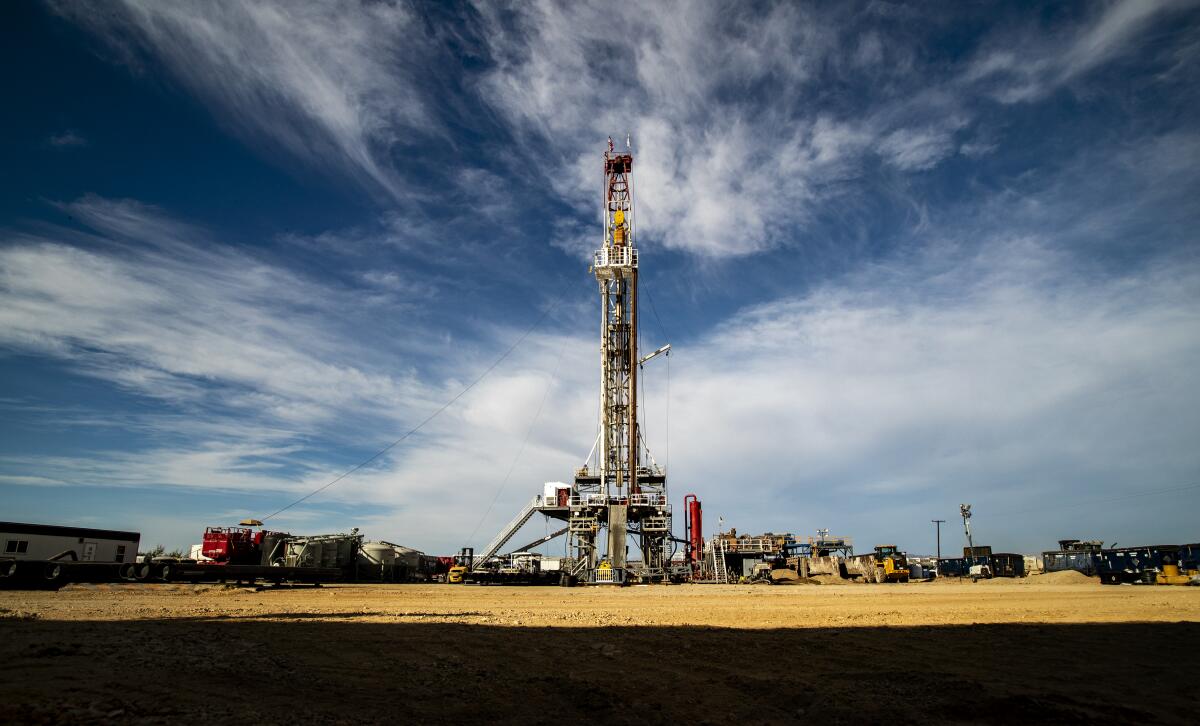
Climate advocates have their own issues with the legislation — including the fact that it all but requires the federal government to keep leasing public lands and waters for oil and gas drilling, as demanded by Manchin.
Most clean energy activists are enthusiastically supporting the bill anyway, citing analyses like this one that have found the climate benefits far outweigh the losses. But the leasing provision is still a bitter pill to swallow for “keep it in the ground” activists, who over the last decade campaigned to end federal oil and gas leasing, turning a fringe idea into Democratic Party orthodoxy.
Conservationists are especially unhappy the bill will require previously canceled offshore lease sales in the Gulf of Mexico and Alaska to move forward, and won’t ban new drilling in the Arctic National Wildlife Refuge. Details here from Alex DeMarban and Riley Rogerson at the Anchorage Daily News.
Then there’s the permitting side deal. To win Manchin’s support, Democratic leaders in the Senate and House agreed to hold votes on yet-to-be-written legislation that would speed the federal approval process for all kinds of energy projects — including fossil fuel pipelines and natural gas export plants, like the ones Sempra Energy of San Diego is developing in Mexico.
Although it’s not yet clear what the permitting legislation will include, Manchin is adamant that it lead to approval of the Mountain Valley Pipeline, a controversial gas line through the Appalachian Mountains whose developers — along with other pipeline companies — have become some of his biggest campaign contributors, as Hiroko Tabuchi reports for the New York Times.
On the flip side, the permitting bill could also lead to easier approval of clean energy infrastructure.
That would be a big deal, because land use is quickly becoming a major obstacle to accelerating the clean energy buildout, as I wrote after the Senate bill’s passage. Across the country, there’s rampant local-level opposition to wind and solar farms, transmission lines and lithium mines — over aesthetics, property values, loss of farmland and even environmental concerns.
Some experts tell me the best solution is for developers and government agencies to take local concerns seriously and work with communities to make clean energy work for them. But that’s not the only option. In California, local governments are furious over a new law that gives state officials greater control over solar and wind farm approval, CalMatters’ Julie Cart writes.
An especially contentious land-use battle recently came to an end in the California desert, with the U.S. Interior Department announcing the 457-megawatt Palen solar farm is fully online. As I’ve written previously, environmental groups including the Sierra Club tried to block the project, saying it could harm animals such as the desert tortoise and the Mojave fringe-toed lizard.
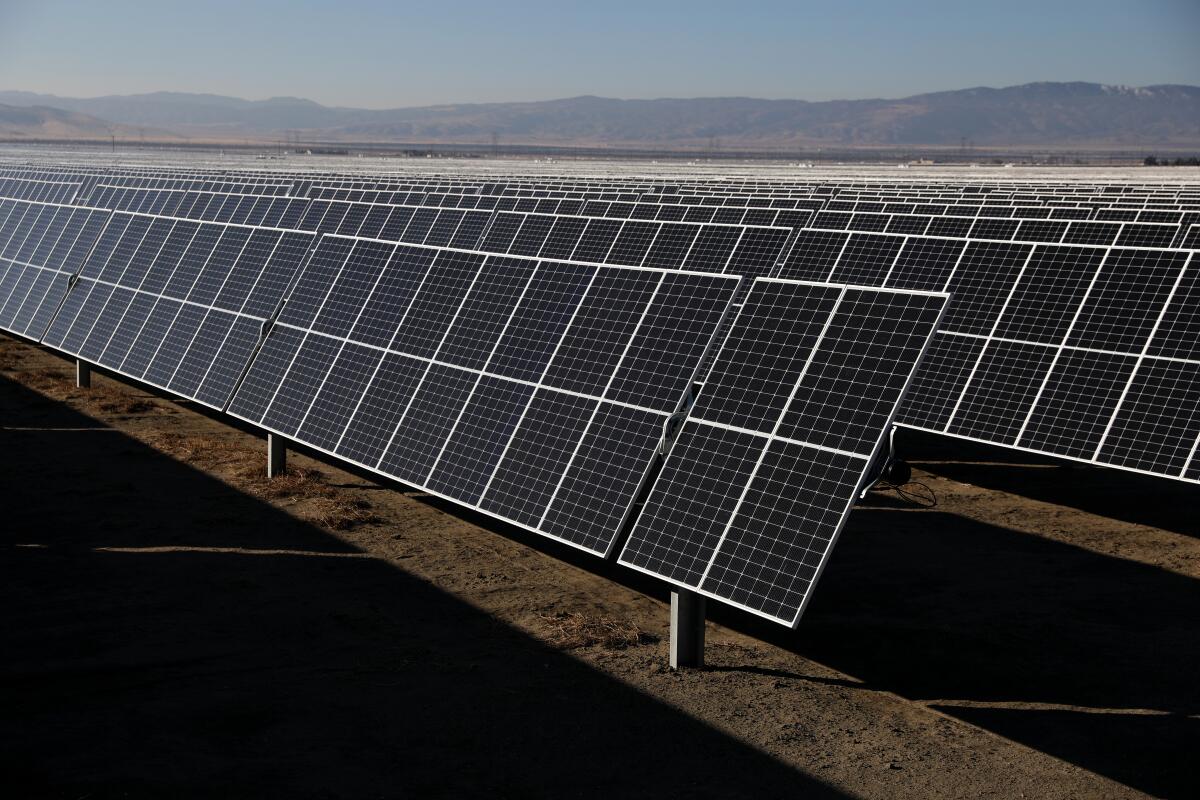
Anyway, it wasn’t just Manchin making demands — Arizona Sen. Kyrsten Sinema, the other Democratic swing vote, helped secure a last-minute addition of $4 billion in drought relief for the Colorado River Basin. The money could be used to pay farmers in California’s Imperial County and Arizona’s Yuma County to leave land fallow, per the Desert Sun’s Janet Wilson and the Arizona Republic’s Zayna Syed — a potentially useful tool as the federal government demands massive cuts in Colorado River water use.
There’s plenty of other stuff in the bill, including tax credits and grants for climate-friendly aviation fuels, a $27-billion green bank and tens of billions of dollars for sustainable farming and environmental justice efforts. Some oil and gas companies will have to pay fees as high as $1,500 a ton on methane leaks, although in a concession to Manchin, much of the fossil fuel industry will be exempted from the payments, Reuters’ Valerie Volcovici and Nichola Groom report.
All of those elements matter. But it’s also important not to lose track of the big picture.
The climate outlook was pretty dire before the Senate passed this bill, and it’s only somewhat less dire now, with a scary reality of worsening fires, storms, droughts and heat waves continuing to play out before our eyes. This legislation should help reduce heat-trapping emissions, but it’s not enough. Scientists say much more must be done on climate.
Which brings us to California.
As my colleague Taryn Luna reports, Gov. Gavin Newsom is pushing lawmakers to strengthen the state’s climate goals before the legislative session ends Aug. 31. He wants them to pass a law increasing the state’s carbon reduction target to 55% below 1990 levels by 2030, and mandating economy-wide carbon neutrality by 2045. He’s also urging the Legislature to set a goal of 90% climate-friendly electricity by 2035 — well ahead of an existing law requiring 100% by 2045.
“We need to up our game,” said Lauren Sanchez, Newsom’s senior climate advisor.
Additionally, Newsom wants lawmakers to ban new oil and gas drilling within 3,200 feet of homes and schools — the same distance required in a draft regulation from last year that hasn’t been finalized. The governor’s proposal also calls for carbon-capture rules that “minimiz[e] impacts to communities where these technologies and projects are developed” — a priority for climate justice activists, who worry that carbon capture will prolong the life of highly polluting fossil fuel facilities.
Separately, the California Energy Commission voted Wednesday to set a long-term goal of installing 25 gigawatts of offshore wind power. That’s 600 times more offshore wind than the entire U.S. has built so far, and as much capacity as 11 Diablo Canyon nuclear plants.
There’s a big difference between setting a goal and actually building ocean wind turbines. But Sanchez is optimistic.
“Offshore wind represents one of the greatest climate, clean energy and economic opportunities,” she told me. “There is an incredible global market that China and others currently lead, but that California hopes to double down on.”
Only time will tell — on offshore wind, and on climate action more broadly. And after decades of meandering, time is short.
But the willingness of 50 senators to stake their claim to a climate bill is a big deal. Change is afoot.
On that note, here’s what’s happening around the West:
TOP STORIES
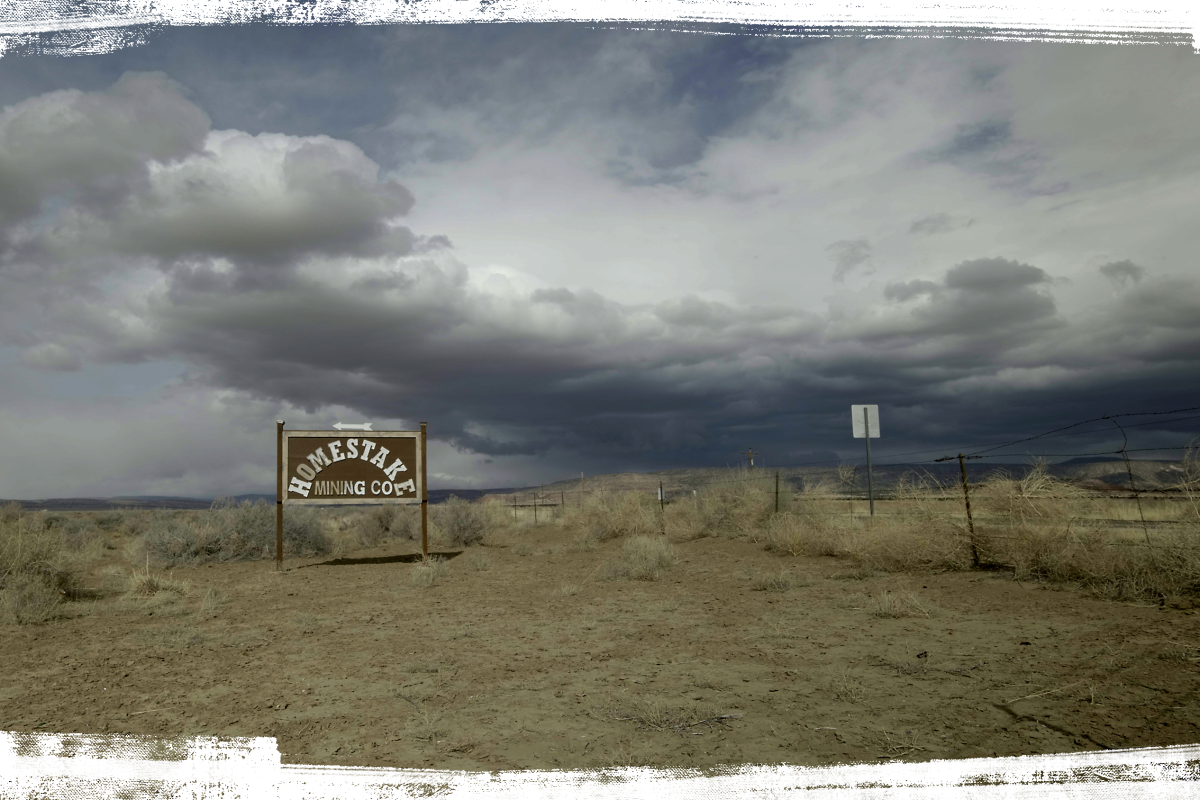
It’s been 32 years since a New Mexico uranium mill shut down — but nearby communities are still suffering from a legacy of deadly radiation that the federal government and Canadian mining giant Barrick Gold have failed to clean up. That’s the conclusion of this startling investigation by ProPublica’s Mark Olalde and Maya Miller, co-published with the L.A. Times. Maya also wrote a valuable piece on why the radioactive gas radon is so dangerous, and how to know whether you’re at risk of exposure. In other toxic pollution news, the Environmental Protection Agency says the amount of DDT dumped off Southern California’s coast is even more than feared — which I didn’t think was possible after reading my colleague Rosanna Xia’s earlier coverage. And there may be all sorts of other toxic substances down there that we don’t know about yet.
The intense storms that flooded Las Vegas casinos and prompted the shutdown of Death Valley National Park in the last few days are exactly the kind of extreme weather that scientists expect more of as temperatures rise. So write The Times’ Alex Wigglesworth and Harriet Ryan in their story on the storms. (The same applies to the flash flood that closed one of my favorite desert spots, the Palm Springs Aerial Tramway.) In other climate disaster news, the Associated Press’ Seth Borenstein looks at new research that indicates extreme weather is leading to greater spread of infectious disease, and Kaiser Health News’ Emmarie Huetteman has an important story on the special danger that heat waves pose to kids. It’s no wonder young people are feeling climate anxiety — and in many cases becoming fierce climate advocates, as my colleague Melissa Gomez explores in a great piece.
Some Northern Californians are convinced the decline of the logging industry, caused in part by environmental rules, has led to worsening fires — even though many other factors are at play. Those deeply felt but factually questionable sentiments are a case study in political polarization, The Times’ Hayley Smith writes. Meanwhile, the McKinney fire continues to burn, surpassing 60,000 acres, destroying at least 87 homes and killing at least four people, including 73-year-old U.S. Forest Service fire lookout Kathy Shoopman. The blaze also contributed to a massive debris flow that appears to have killed an enormous number of fish in the Klamath River, including juvenile chinook and coho salmon, Alex Wigglesworth reports. In better news, Itzel Luna writes that Yosemite National Park has reopened the Mariposa Grove to the public after it survived the Washburn fire.
WATER IN THE WEST
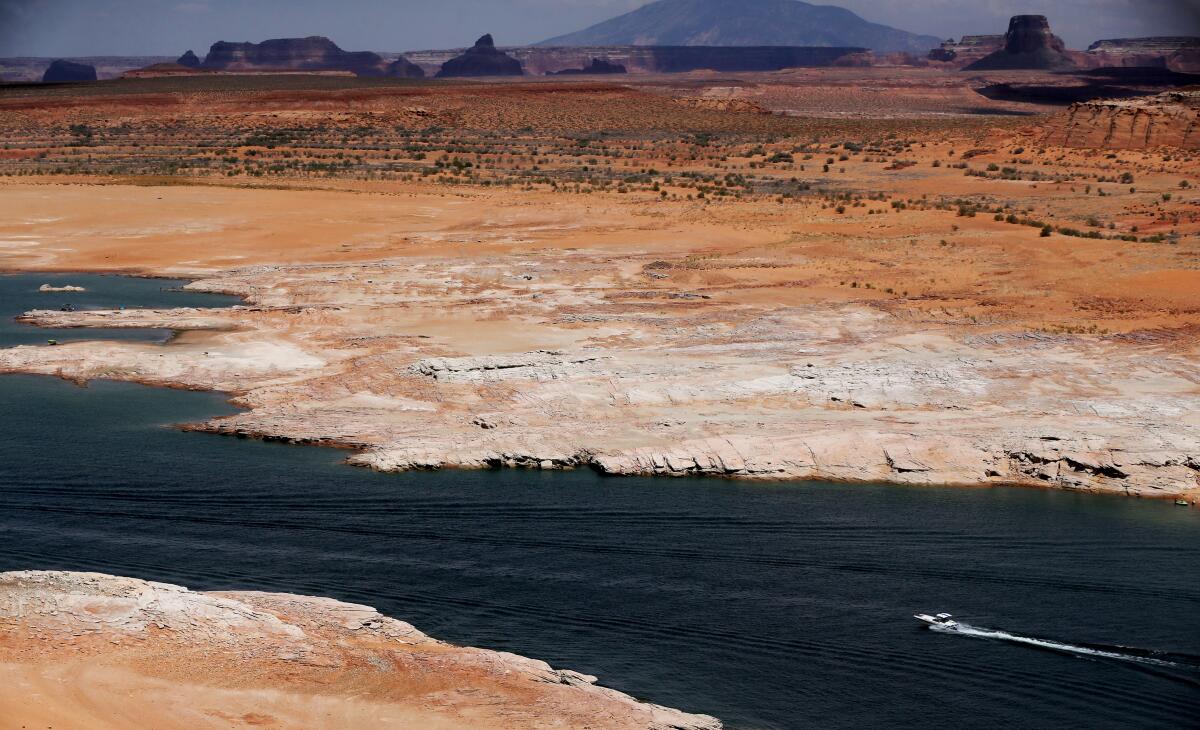
A federal deadline for Colorado River Basin states to agree on a plan to radically cut water use is less than a week away. There are signs of progress — the Metropolitan Water District of Southern California and the Imperial Irrigation District are negotiating a plan to forgo 400,000 acre-feet of water, the Desert Sun’s Janet Wilson reports. But the various parties across seven states don’t seem close to a deal of the scope and scale federal officials say is necessary. And in the meantime, reservoir levels continue to fall. Human remains were just found at Lake Mead for the fourth time since May, and there’s a worrying new report from environmental groups making the case that “antiquated plumbing” at Lake Powell could diminish the reservoir’s ability to send water downstream, per Zak Podmore at the Salt Lake Tribune. And while the Colorado River situation is bad on this side of the border, it’s much worse in the Mexican city of Ensenada, at the very end of the water priority line. Here’s the story from MacKenzie Elmer and Vicente Calderón at Voice of San Diego.
Colorado River Basin tribes say they’ve been largely excluded from the ongoing negotiations over cutting water use. That’s just not fair. It’s also not practical, since tribes have a legal right to a big chunk of the river. That’s a topic the Arizona Republic’s Debra Utacia Krol explores in a fabulous new series. She writes that tribes are increasingly asserting their right to water from the Colorado and its tributaries, but there are still far too many legal and physical obstacles to tribes using their water — a reality that one Indigenous activist describes as “just a continuation of the Indian wars.” Deb also wrote about tribes conserving water on their farms, and using their water to restore sections of the Colorado and its tributaries to pre-colonial conditions.
Angelenos cut water use 11% last month — a July record. Details here from my colleague Hayley Smith. It’s good news, even as we remember that learning to live in a drier West is more complicated that tearing out lawns and taking shorter showers. Just look to Northern California, where Asian American residents are suing Siskiyou County, claiming it’s only enforcing a certain drought rule in Asian American neighborhoods home to cannabis cultivation, as The Times’ Anh Do reports. Or look to Southern California, where Las Virgenes Municipal Water District tried and failed to secure more water from the state by arguing people need it to irrigate vegetation around their homes to reduce wildfire risk. Catalina Island is another interesting case study. Water shortages on the island aren’t nearly as bad as they were during the last drought, largely thanks to a small desalination plant. But residents are still taking water-saving measures that would put Angelenos to shame, Hayley Smith writes.
POLITICAL CLIMATE
San Diego could be the next major city to ban gas hookups in new construction — and in an even more dramatic move, officials hope to electrify almost all existing buildings over the next 12 years. Here’s the story from Joshua Emerson Smith at the San Diego Union-Tribune. In an interesting plot twist, the chief executive of Sempra Energy — parent company of San Diego Gas & Electric and Southern California Gas Co. — says he’s all good with the city’s plan, per the Union-Tribune’s Rob Nikolewski. As more homes switch to electricity for heating and cooking — L.A. is one of many cities making the transition — it will be more important than ever for utility companies to design electric rates that work for customers, and to explain those rates appropriately. At least so far, Southern California Edison is having some problems in that department, my colleague Kiera Feldman reports.
Angelenos will have a chance to vote on a ballot measure requiring the city to carve out more street space for bikers and pedestrians — unless the City Council gets there first. The initiative could reduce traffic deaths and pollution, although it’s definitely got critics, The Times’ Rachel Uranga writes. And it’s just one of the efforts underway to limit Southern California’s dependence on gasoline-fueled cars. The first electric people mover vehicle that will ferry travelers to and from Los Angeles International Airport arrived last week, and San Bernardino County is working on an underground tunnel to whisk travelers from a Metrolink station to Ontario International Airport in the Inland Empire, Summer Lin writes. Back in L.A., City Councilmember Kevin de León is interested in the idea of closing the newly opened 6th Street Viaduct to cars on weekends.
Seven years after the San Juan River was inundated with pollution from the Gold King Mine spill — which federal officials admit they caused — Navajo Nation farmers are still fighting the federal government for compensation, even as the Biden administration says environmental justice is a top priority. Here’s the story from Michael Benanav for Searchlight New Mexico. In another case of tribes frustrated with a federal agency, Oregon Public Broadcasting’s Tony Schick and ProPublica produced an illuminating investigation that found Bonneville Power Administration — which operates dams across the Columbia River Basin — has repeatedly put its own financial interests ahead of legally mandated salmon recovery.
AROUND THE WEST
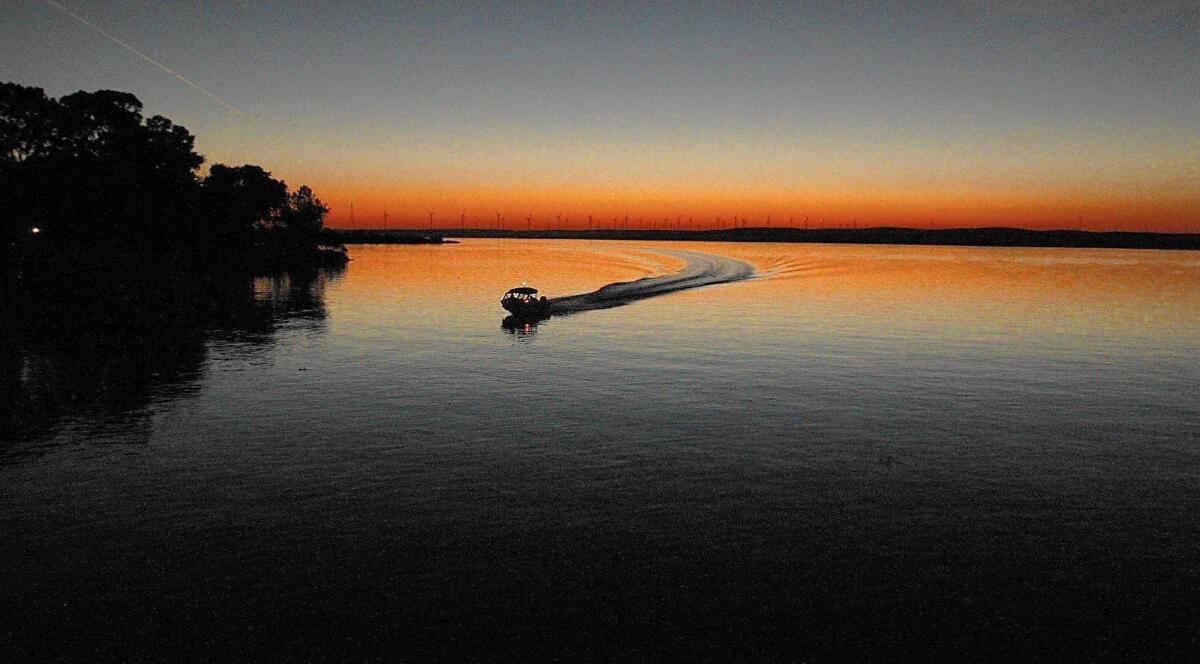
In the California Delta — the estuary at the heart of the state’s water system — drought isn’t the only manifestation of the climate crisis. As the Pacific Ocean rises and river flows shrink, seawater is pushing farther inland and making water in the delta too salty to drink or use for irrigation, the Associated Press’ Kathleen Ronayne writes. One city is building an inland desalination plant to cope. Speaking of which — California Coastal Commission staff say the operator of a Carlsbad desalination plant violated its permit by failing to start a wetlands restoration project on time. Details here from the San Diego Union-Tribune’s Phil Diehl.
A longtime farming giant is trying to stop a wealthy Silicon Valley developer from moving water around the San Joaquin Valley as supplies dry up. The details of the dispute between J.G. Boswell Co. and John Vidovich are complex, but it all basically boils down to “a bitter legal fight between the two multimillion-dollar businesses, pitting old power against new money and ambition,” Lisa M. Krieger and Veronica Martinez write for the Mercury News. And it’s playing out against “a backdrop of deep distrust in the community about both companies’ hidden agendas,” they write.
I’d heard of coal seam fires — but I had no idea they’d become such a big problem in Montana. So I learned a lot from this in-depth investigation by Austyn Gaffney for High Country News on the seemingly vicious cycle of more wildfires ignited by burning coal seams and more coal seams ignited by worsening wildfires. It’s not great. I also had no idea that a great deal of medical equipment is sterilized with a carcinogenic chemical, ethylene oxide — and air-quality regulators say that chemical is leaking from some Southern California facilities where it’s used. Here’s the eye-opening story from my colleague Tony Briscoe.
ONE MORE THING

I don’t say this enough: Thank you to everyone who reads this newsletter.
If you value my journalism — and all the other climate and environment stories we produce at the L.A. Times — I’d ask you to please consider buying a digital subscription. Our work is only possible with your support.
We’ll be back in your inbox next week. If you enjoyed this newsletter, please consider forwarding it to your friends and colleagues. For more climate and environment news, follow me on Twitter @Sammy_Roth.
Toward a more sustainable California
Get Boiling Point, our newsletter exploring climate change, energy and the environment, and become part of the conversation — and the solution.
You may occasionally receive promotional content from the Los Angeles Times.




